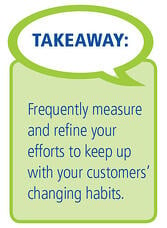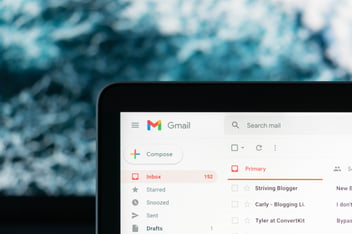6 Engagement Metrics that Reveal Customer Loyalty
There’s a lot of ongoing discussion about the idea of measuring customer loyalty. It’s a worthy endeavor, but for many, a painstaking and often fruitless one.
Here’s an experiment: The next time you run into a business owner or manager, ask them what customer loyalty means to them.
Some will say a customer that returns over and over again. Others will say “loyalty” means “the customer buys (insert product here) from my business and ONLY my business. A few will probably even respond that it’s an advocate, someone who engages with the brand online and shares with friends, regardless of how much the advocate actually spends.
The point is “loyalty” takes on many different interpretations. Just like “value,” it’s in the eyes of the beholder.
Combine this lack of a universal definition with the fickle, rapid way consumer behavior shifts, and “customer loyalty” becomes a constantly evolving moving target that cannot be hit with a magic bullet.
So how does one measure loyalty? How can a business distinguish the trees from the forest, so to speak, and replicate the events that led to a loyal relationship?
The one thing all variations of loyalty have in common is frequent levels of engagement. They’re willing to listen to what the brand has to say and have some level of regular interaction with it.
The first step to measuring loyalty is measuring engagement. While every brand operates differently, here are six fairly simple (in some cases, obvious) measures that just about any company can monitor to gain a better grasp of where they stand with their customers:
- Enrollees – Do you have a loyalty program, a mailing list, or some other brand program that customers can enroll in? It seems obvious, but measuring enrollees is important because it can reveal if the promised value is compelling or not. If they’re not signing up, then the “What’s in it for them” isn’t being communicated, or simply isn’t appealing.
- Social media reach – Experts have debated the value of Facebook Likes and Twitter followers for years now, much the same way others have debated loyalty metrics. The bottom line is this: people love to connect with brands through social media, and when they like or follow a brand, they’re opening themselves up to a dialog with that brand. It’s fertile engagement ground.
- Open & Click-through rates – Billions of people send hundreds of billions of emails each day. Studies have shown that people want to receive emails from their preferred brands; yet most of those emails fall flat. Watch closely to see how often yours are being opened, and what content in those emails people are engaging with.

- Comments – If you constantly solicit feedback, customers will provide the blueprint for how to build your brand and earn their loyalty. The most important thing is to have those feedback forums available. Let them know they can contact you anytime through phone numbers, web contact forms, blog comments, Facebook comments, Twitter replies, and so on. The more you hear from them, the more you’ll learn.
- Usage – How often are customers redeeming points and offers? And what effect do emails, social posts and other promotional channels have on usage? This metric will show if your loyalty program promises are realistic or not.
- Repeat usage – For many this is indeed a true measure of loyalty, but in engagement terms it should also include loyalty (or marketing) program interactions as well as purchases. Are customers returning to your program with frequency, or redeeming offers, entering contests, etc? What drives them back – is there a certain communication form or special offer that entices them?
Engagement leads to loyalty, so by measuring engagement brands will gain insight into what produces the most-likely-to-be-loyal customers, no matter what “loyalty” means to them. And even if they don’t fit into a brand’s “loyal” bucket, highly-engaged customers are still incredibly valuable and worth identifying – as well as the steps that led them to their levels of engagement.
Topics: Customer Engagement, customer loyalty
Written by: Brandon Carter






.jpeg)







Share your Comment.